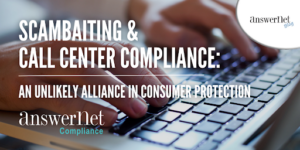By Rich Hamilton, Director of Marketing & Product Development
 Any salesperson will tell you that it takes multiple touch points to book a sale. Depending on the industry and the type of product or service, it can take 7 to 20 touches before a prospect will buy from your company. As a B2B outbound telemarketing company, we experience this in our daily work for our clients.
Any salesperson will tell you that it takes multiple touch points to book a sale. Depending on the industry and the type of product or service, it can take 7 to 20 touches before a prospect will buy from your company. As a B2B outbound telemarketing company, we experience this in our daily work for our clients.
Imagine if each of those touch points were a phone call, the sales cycle would take forever. Adding email as a touch point can drastically decrease the sales cycle. Here are 6 best practices for adding email as an additional touch point as part of your overall marketing and sales strategy.
Best Practice #1 – Your telemarketing company should strategically pair outbound calls with email follow-up
One of the most important concepts when sending out email as part of an outbound telemarketing campaign is to think through the prospect experience and make sure that the follow-up emails make logic sense to your prospect or customers. There are many types of emails that can be sent including Informational, confirmations and follow up emails. Make sure that at the right point in the script, you are sending out the right type of email to the prospect or customer.
For example: On a first or second call, the conversation might lead the call center agent to send out an email with some additional information on the product or possibly a URL for further research. On a follow up call where the call center agent is unable to reach the person, another email reinforcing the first email could be sent, explaining they had tried to call and wanted to make sure there were no additional questions. After the sale is complete, an email could be sent by the agent thanking the new customer for their time and hope they enjoy the product/service.
Don’t send out an email just to be sending out an email. The email should reinforce the conversation that was just completed over the phone, or to help move the lead through the sales cycle. You may find that based on your work flow, an email would not be helpful.
Don’t forget to plan for how to handle replies to those emails. Do you want the agents to handle those emails or should they go back to a central inbox that can be answered by several people? Focusing on how the email will fit into your current work flow will help answer these questions.
Best Practice #2 – Your telemarketing company should use automation for sending emails
Sending emails can be very cumbersome and time consuming if the call center agents do them one by one and lots of typing is required. In many instances, a call center agent can make 2 or 3 more phone calls in the time it takes to craft one email and send it out. Therefore, automating the process of sending email as a follow-up to outbound calls is vital. Reducing the amount of time an agent is spending on emails make the decision to use email that much easier.
Automation can be achieved in many ways. The dialer or CRM may have logic built in that on certain actions or changes to a record, and email is sent out. 3rd party software can also be used to help automate the sending of emails through integration with the dialer/CRM (APIs). Any way to automate the process means more outbound calls can be made which means more sales. It’s a numbers game.
Best Practice #3 – Your telemarketing company should ensure consistency when sending emails
Just as it is important for agents to use the same script during an outbound telemarketing phone call, the emails that are sent out should also be similar. By using some type of application that is automatically sending the email, you will ensure that the emails will be free of misspelled words, that the email is formatted and looks professional, that there is no wrong information about the product and that they are sent to the right person. Having mistakes in the email could be a huge setback to making a sale.
If automation is not possible, setting up guidelines will be vital. The more guidelines that can be given to the agents means a better chance of having an email go out that will look professional and will lead to more sales or conversions.
Best Practice #4 – Your telemarketing company should use personalization in the email messages
I was trying to explain to my 11-year-old daughter the movie You’ve Got Mail and how many years ago everyone was so excited when they received email after logging onto the internet. These days, everyone is receiving too many emails. Most are seen as spam and deleted immediately.
One way to help avoid that is through personalization. Make the email unique so that it doesn’t look like a robot sent it. This can be done through using the potential customer’s name in the subject line or the salutation or make sure the agents use their name in the signature block. An email can also be personalized by adding a note about the phone call the call center agent was just on with the potential customer.
The more that an email speaks to a person individually, the better. Now instead of being deleted, the email will be read and hopefully the proper action will be taken, leading to more sales.
Best Practice #5 – Your telemarketing company should ensure deliverability of the emails being sent
There is no point in adding email to your outbound telemarketing program arsenal if the email never arrives. Although this one might seem obvious, you want to make sure your email hits the person’s inbox, not the spam folder. There are several ways to combat this.
First, if you are sending email on your own behalf (meaning you own the domain), make sure that your email reputation is high. There are several resources out there that can help you see how healthy your domain is for sending email. If you are sending email on behalf of a client, make sure you have the proper SPF record and possibly DKIM set up so that email can be delivered properly.
Second, make sure to follow best practices in terms of your subject line. Avoid words such as Free and the use of symbols. Many spam filters will mark these as spam.
Third, avoid using images unless necessary. This is especially true for B2B selling since many businesses will have company policies in place to automatically block images or worse, the whole email. Some email providers may also block images if they are too large.
Last, there are companies that can analyze your emails and tell you what kind of spam issues you might have. Depending on the role email will play in your overall program, you may want to invest in one of these subscriptions.
Best Practice #6 – Don’t forget the small stuff
During the process of setting up an email campaign as part of an outbound telemarketing campaign, it is easy to forget some of the smaller details that are still important. First, never overlook the pre-header text. This is the text that appears below the subject line in many email clients such as Outlook. This line of text can support the subject line and help entice the recipient of the email to open the email instead if just deleting it or worse, marking the email as spam. Including phrasing such as “Here is the information you requested…” or “Per our phone conversation…” can help remind the recipient why they are getting the email.
Second, don’t forget the power of the Name and Email address used in the From Email field. Stay away from email addresses such as noreply@. This will feel very impersonal and more like spam. If you can use the name and email of the agent that sent the email, great. Just don’t forget about Best Practice #1 and make sure this works within your work flow. For many telemarketing companies, this is not practical. Instead, use a from name that will be easily recognizable by the email recipient. You might even add what the from name and email address are in the script so that the person knows what to expect. If there is a name for the department sending out the email, use that as the from name, such as [company name] Customer Service Desk.
Last, make sure you have a process in place to check for quality. Maybe this means having the agents send a test email to a supervisor or a quality assurance person, or maybe it means having the supervisor or QA person automatically Bcc’d on each email if it is an automated process. Either way, time should be taken to make sure that the emails are sent out properly, just like calls are monitored to make sure that scripts and other procedures are being followed.
Final Thoughts
While adding email to an outbound telemarketing campaign can feel like a daunting task, it is well worth it. Having the ability to send out an email, especially if someone being called is hesitant can be very powerful and effective. It’s another tool for your outbound telemarketing agents!
Here at Quality Contact Solutions we build our own custom applications to send out perfectly formatted emails at the click of a button. We send emails on all kinds of outbound telemarketing campaigns, from appointment confirmations, to additional product details with links or follow ups when we are unable to reach the intended party. If you have any questions about how to build an effective email campaign, email me at rich.hamilton@qualitycontactsolutions.com.
Other Articles You Might Find Interesting:
3 Reasons to Use the Text Channel in the Call Center
Successful Outsource Telemarketing Using Call Blending
Call Center Monitoring Checklist: Brief is Best
Rich Hamilton is the Director of Marketing & Product Development for Quality Contact Solutions, a leading outsourced telemarketing organization. Rich works tirelessly to bring new products to the teleservices and call center market. Rich is also the creative powerhouse behind executing on a wide spectrum of marketing initiatives for the organization. In addition, Rich is a telemarketing compliance guru with a Customer Engagement Compliance Professional (CECP) certification to back it up. Rich can be reached at rich.hamilton@qualitycontactsolutions.com or 516-656-5105.









